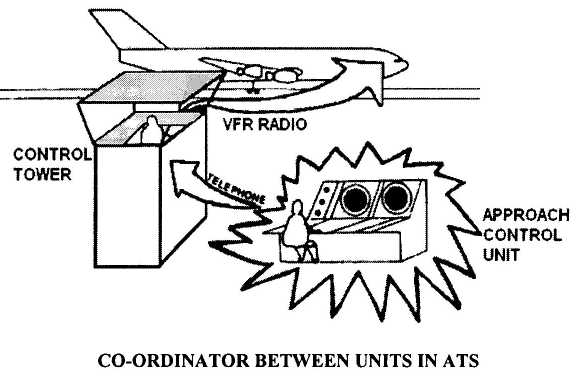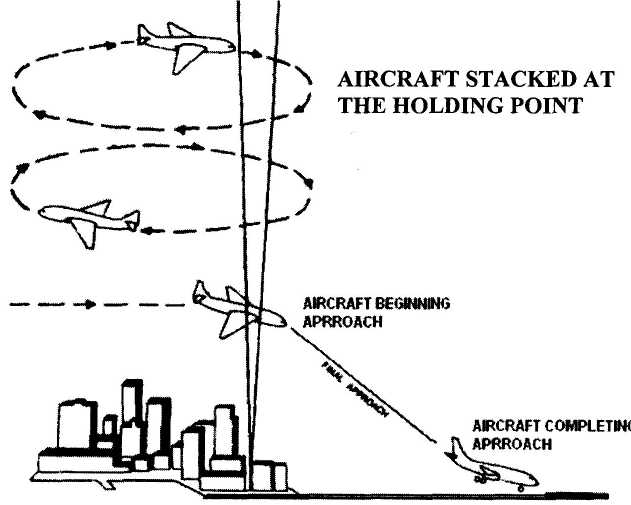
- •International civil aviation organization
- •English for air traffic controllers
- •Introduction
- •Lesson 1 flight ba 624 from mirabel international airport, montreal to heathrow international airport, london
- •Ba 624 at holding position
- •Vocabulary
- •Lesson 2
- •Aeronautical information service (ais)
- •Vocabulary
- •Lesson 3
- •The effects of the weather on aviation
- •Vocabulary
- •Lesson 4 the control tower
- •Vocabulary
- •Lesson 5 approach control
- •Vocabulary
- •Lesson 6 a conversation between a flight dispatcher and a pilot
- •Vocabulary
- •Lesson 7 area control service
- •Vocabulary
- •Lesson 8 radio navigation aids - vor/dme
- •Lesson 9 radio navigation aids aids to final approach and landing ils
- •Ils facility
- •Vocabulary
- •Lesson 10 conversations
- •Vocabulary
- •Lesson 11
- •Approach and landing
- •Lesson 12
- •Visual aids for navigation markings and lights
- •Vocabulary
- •Vasis is
- •Lesson 13 a short history of radar
- •Reflected energy
- •Vocabulary
- •Lesson 14 some problems associated with radar
- •Vocabulary
- •Lesson 15 other navigational aids
- •Vocabulary
- •Vocabulary index
Lesson 5 approach control
 Approach
control can be situated at the aerodrome or at some other site.
Normally, if there are two aerodromes in a vicinity, there will be
one approach control unit to cover them both. Generally speaking, the
approach controller's main task is to provide separation to departing
and arriving aircraft operating under instrument
flight rules. The approach controller generally takes over the
control of an arriving aircraft from the airways controller and
eventually hands over that aircraft to the control tower. For
departing aircraft the procedure is reversed. A considerable degree
of (1) co-ordination
is therefore required between the various units
in air traffic services.
Approach
control can be situated at the aerodrome or at some other site.
Normally, if there are two aerodromes in a vicinity, there will be
one approach control unit to cover them both. Generally speaking, the
approach controller's main task is to provide separation to departing
and arriving aircraft operating under instrument
flight rules. The approach controller generally takes over the
control of an arriving aircraft from the airways controller and
eventually hands over that aircraft to the control tower. For
departing aircraft the procedure is reversed. A considerable degree
of (1) co-ordination
is therefore required between the various units
in air traffic services.
The approach control unit has radio equipment similar to that in the control tower. This enables the controller to communicate with aircraft on several different radio frequencies. Most of the frequencies are in the (2) VHF range with some in the (3) UHF.
Aircraft operate under two different types of rules: IFR and VFR. If (4) Visual Meteorological Conditions prevail, flight under Visual Flight Rules (VFR) Coordination between unit in ATS is permissible. In (5) Instrument Meteorological Conditions. Instrument Flight Rules (IFR) apply.
When airports are very busy the approach controller may have (6) to stack the aircraft at different levels so that each may descend in turn towards the airport. In such cases the approach controller usually gives aircraft their (7) expected approach time. Because of their high fuel consumption at low levels, jet aircraft and, particularly (8) supersonic aircraft, prefer to remain at higher altitudes before starting their descent.
Vocabulary
|
|
|
|
|
|
|
|
|
|
|
|
|
|
|
|
CONVERSATION
W hen
many people are working
at similar tasks, they must co-ordinate
(1) their work. Do military
pilots flying in formation coordinate
with each other? Is it necessary
for an architect to coordinate
with an engineer? Approach controller
with aerodrome controller? Area
controller with aerodrome controller?
Who does an area controller
co-ordinate with? Approach controller? Military pilots flying in
formation?
Tell me what you think, would
happen if military pilots did not co-ordinate
with each other.
hen
many people are working
at similar tasks, they must co-ordinate
(1) their work. Do military
pilots flying in formation coordinate
with each other? Is it necessary
for an architect to coordinate
with an engineer? Approach controller
with aerodrome controller? Area
controller with aerodrome controller?
Who does an area controller
co-ordinate with? Approach controller? Military pilots flying in
formation?
Tell me what you think, would
happen if military pilots did not co-ordinate
with each other.
Is VHF (2) very high frequency? Can we transmit messages on VHF? To whom does the controller speak on VHF? What does VHF mean?
Is UHF (3) another radio frequency? Is UHF ultra high frequency? Can we tune-in to UHF? Can we tune-in to UHF on an ordinary radio? On what type of radio can we tune-in to UHF?
Is the weather clear under Visual Meteorological Conditions? Do pilots like to fly under Visual Meteorological Conditions? (4) Can he see the airport under Visual Meteorological Conditions? Can the airport be closed-in under Visual Meteorological Conditions? What sort of weather is Visual Meteorological Conditions? What is the abbreviation of Visual Meteorological Conditions? What rules do pilots follow under VMC?
Is the weathwer cloudy under Instrument Meteorological Conditions? (5) Is it overcast? Is visibility good under Instrument Meteorological Conditions? What sort of weather is it under Instrument Meteorological Conditions? What is the visibility under IMC? What conditions do we have today, IMC or VMC?
Do controllers stack (6) flights at busy airports? Do they stack flights at quiet airports? At what airports do controllers stack flights? Why do they stack flights? Who stacks flights? How do they stack flights? Where do they stack flights?
Does a pilot receive his expected approach time (7) from the controller? Does he receive his expected approach when he is at the holding position? On base leg? On the downwind leg? Where is the pilot when he receives his expected approach timer? Who gives the pilot his expected approach time? What is the pilot doing when he receives his expected approach time? What is the abbreviation of expected approach time?
The Concord is a supersonic aircraft. (8) Does a supersonic fly faster than the speed of sound? Does the supersonic fly very high? Does the supersonic consume a lot of fuel? Is the Boeing 747 supersonic? What plane is supersonic? What other supersonic aircraft do you know? Is there any special radiotelephony phraseology for supersonic aircraft?
WRITTEN EXERCISE
Instructions to students: What is the difference between the job of an aerodrome controller and an approach controller? Describe in your own words.
